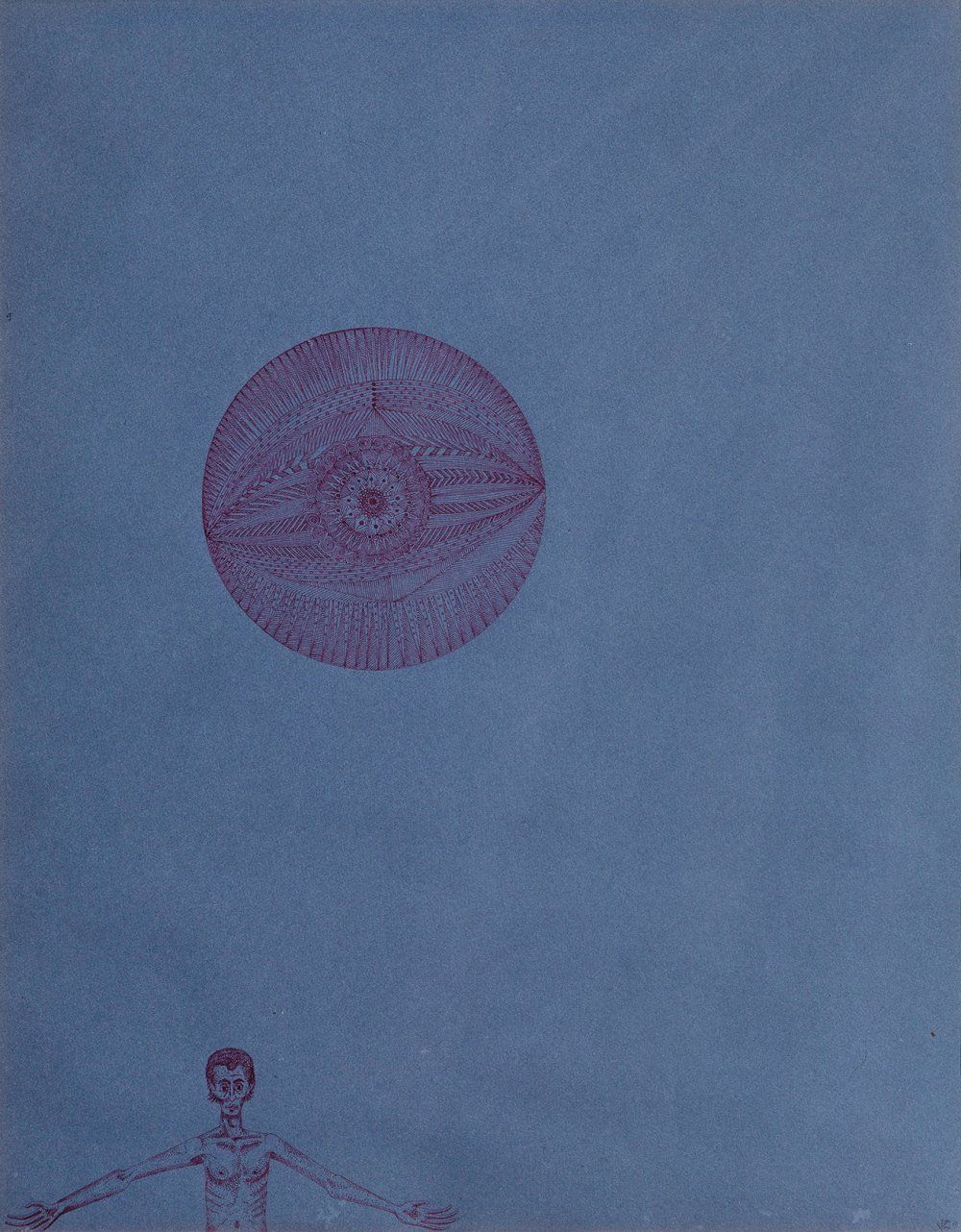Description
JOAN PONÇ BONET (Barcelona, 1927 - Saint-Paul, France, 1984). "El Hombre 14", 1967, Cadaqués. Ink on paper. Signed, dated, located and titled on the back. Size: 63.5 x 50 cm; 92 x 76.5 cm (frame). Painter and draughtsman, he trained in Barcelona, in the workshop of Ramón Rogent and at the Academy of Plastic Arts with Ángel López-Obrero. After devoting himself to painting and drawing in anonymity, he held his first individual exhibition in 1946, at the Galería Arte in Bilbao, which was to be his definitive establishment on the national art scene. In 1948, together with Tharrats, Puig, Cuixart, Tàpies and Brossa, among others, he founded the avant-garde group Dau al Set. Selected by Eugenio D'Ors, he took part in the Salón de los Once in Madrid in 1951 and 1952. In 1952 he took part in the Hispano-American Biennial, and the following year he spent some time in Paris, where he met Joan Miró and managed to exhibit at the Musée de la Villa. On the latter's recommendation, Ponç gained access to Brazilian artistic circles, settling in São Paulo from 1953 to 1962. In 1954, the year Dau al Set disbanded, he held an exhibition at the city's Museum of Modern Art, which was so successful that the organisation acquired all his works. In Brazil he visited the equatorial jungles, where he was impressed by their fauna, especially insects, which he incorporated into his imagery. In 1955 he founded the Taüll group with Marc Aleu, Modest Cuixart, Jaume Guinovart, Jaume Muxart, Mercadé, Tàpies and Tharrats. After returning to Catalonia due to illness, as a fully established artist he shows his work in New York, Rio de Janeiro, Bonn, Paris, Frankfurt, Geneva, Antibes and various Spanish cities. In 1965 he won the International Grand Prize for Drawing at the São Paulo Biennial. Ponç's paintings present phantasmagoric images that are both painful and tortured, in which the subconscious is the protagonist. For the painter, art is nothing more than an introduction to the mystery and secrets of the spirit. More of a draughtsman than a painter, his work is extremely detailed and meticulous. Ponç's production can be divided into six periods: the Dau al Set period (1947), the Brazilian period (1958), the metaphysical-geometric period (1969), the period of the metaphysical characters (1970), the acupainting period (1971) and a final period of synthesis (1972). He is currently represented at the Museo de Arte Contemporáneo de la Universidad de São Paulo, the Museo Patio Herreriano in Valladolid, the MACBA in Barcelona, the Centro-Museo Vasco de Arte Contemporáneo in Vitoria, the Museo de L'Empordà and the Museo Nacional Centro de Arte Reina Sofía.
75
JOAN PONÇ BONET (Barcelona, 1927 - Saint-Paul, France, 1984). "El Hombre 14", 1967, Cadaqués. Ink on paper. Signed, dated, located and titled on the back. Size: 63.5 x 50 cm; 92 x 76.5 cm (frame). Painter and draughtsman, he trained in Barcelona, in the workshop of Ramón Rogent and at the Academy of Plastic Arts with Ángel López-Obrero. After devoting himself to painting and drawing in anonymity, he held his first individual exhibition in 1946, at the Galería Arte in Bilbao, which was to be his definitive establishment on the national art scene. In 1948, together with Tharrats, Puig, Cuixart, Tàpies and Brossa, among others, he founded the avant-garde group Dau al Set. Selected by Eugenio D'Ors, he took part in the Salón de los Once in Madrid in 1951 and 1952. In 1952 he took part in the Hispano-American Biennial, and the following year he spent some time in Paris, where he met Joan Miró and managed to exhibit at the Musée de la Villa. On the latter's recommendation, Ponç gained access to Brazilian artistic circles, settling in São Paulo from 1953 to 1962. In 1954, the year Dau al Set disbanded, he held an exhibition at the city's Museum of Modern Art, which was so successful that the organisation acquired all his works. In Brazil he visited the equatorial jungles, where he was impressed by their fauna, especially insects, which he incorporated into his imagery. In 1955 he founded the Taüll group with Marc Aleu, Modest Cuixart, Jaume Guinovart, Jaume Muxart, Mercadé, Tàpies and Tharrats. After returning to Catalonia due to illness, as a fully established artist he shows his work in New York, Rio de Janeiro, Bonn, Paris, Frankfurt, Geneva, Antibes and various Spanish cities. In 1965 he won the International Grand Prize for Drawing at the São Paulo Biennial. Ponç's paintings present phantasmagoric images that are both painful and tortured, in which the subconscious is the protagonist. For the painter, art is nothing more than an introduction to the mystery and secrets of the spirit. More of a draughtsman than a painter, his work is extremely detailed and meticulous. Ponç's production can be divided into six periods: the Dau al Set period (1947), the Brazilian period (1958), the metaphysical-geometric period (1969), the period of the metaphysical characters (1970), the acupainting period (1971) and a final period of synthesis (1972). He is currently represented at the Museo de Arte Contemporáneo de la Universidad de São Paulo, the Museo Patio Herreriano in Valladolid, the MACBA in Barcelona, the Centro-Museo Vasco de Arte Contemporáneo in Vitoria, the Museo de L'Empordà and the Museo Nacional Centro de Arte Reina Sofía.
